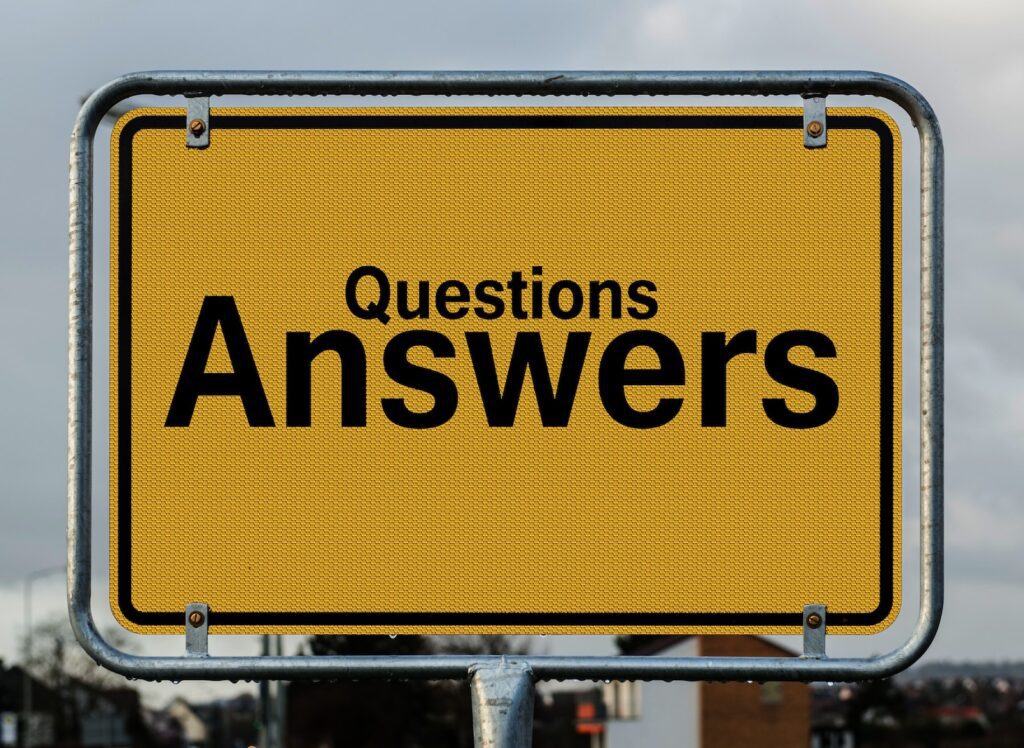Due to the amount of traffic on the Boat Batteries & Charging pages and the number of emails I’ve received on the subject, I’ve decided to post some of the questions and answers here. I hope you find this information helpful! Have a question? You can post a question on our Facebook page!
R. Karl
This page may contain affiliate links, which means I may earn a small commission if you click through and make a purchase. Read our Affiliate Disclosure.
In General
Don’t let the “maintenance free” battery in your car lull you into complacency about the battery in your boat. Neglecting a marine battery is certain to shorten its life. Get the most from your boat’s batteries by following these guidelines:
- Keep idle batteries fully charged. Leaving a battery even partially discharged leads to sulfation and loss of capacity.
- Check the water level regularly. Top off as necessary to keep the level about 1/4” above the plates.
- Use only distilled water for topping off the battery; trace minerals and/or chlorine in tap water really do shorten battery life.
I recommend the Dual Pro 15 Amp/Bank Professional Series 2 Bank Charger for onboard charging.
Question from Frank about Chargers:
Hello!
I was reading your article and I have a question about battery chargers. When you say to get a charger that is rated about 15% of the battery’s amp-hour rating. Where do you find that on the specs of the battery. I have found as follows on the deep cycle SRM-29:*CCA = 675 Cold Cranking Amps
*MCA = 845 Marine Cranking Amps
*RC (Min) = 210 minutes Reserve Capacity
Hours at Ampere Load:
@5 Amps = 21 Hours
@15 Amps = 6.4 Hours
@25 Amps = 3.4 Amps
I haven’t seen a batteries amp hour rating of 200 amp hours!
Thanks for any info. I am looking to buy a charger for my two batteries over the winter.
Frank
Answer:
Hi Frank –
Ampere-hour ratings are simply the number of hours that the battery will last under a particular load. Although many batteries are rated at 125 Ah, 250Ah batteries are out there – and not all that uncommon these days – especially with all the additional electronics that are on today’s boats! On your battery – as is the case on all – the numbers indicate the length of time you can expect to have the battery function properly under the stated load: for instance, 5 amps x 21 hours = 105 Ah. As the load increases, the length of time will decrease: 25 amps at 3.4 hours is only 85 Ah! My guess is that your battery is probably a 125 Ah model. (Although one would think that a battery rated at 125 Ah should run 10 amps for 12.5 hours, in reality it simply will not – lots of Chemistry and Physics there…)
So, if you have a 125 Ah battery, you would generally be looking for a charger that can deliver 15% of that, or approx. 20 amps. Then, as a rule of thumb, take the Amp-hour rating of the battery and divide it by the charger rating (amps). Then add about 10% for the extra time to totally top off the battery, This will give you the approximate total charge time. In your case, your battery should take about 7 hours to charge using a 20-amp charger… but there are many other factors to consider when charging your battery: How much charge is left? What is the condition/age of the battery? What kind of charger do you have? Etc., etc., and etc.
Just remember that a battery can, by self-discharging, lose about 4% – 5% of its charge per week. So, in one month’s time just sitting in a warm garage, a fully charged battery that started at 125 Ah may now have maybe 105 Ah available. Not charging it at all over a four-month period can have disastrous effects! A good charger is even more important than a good battery. And, as has always been the case… you get what you pay for. I recommend a multi-stage charger with auto shut-off. And check the voltage regularly. Never let a battery drop below 80% of its rated voltage. For a 12-volt battery (which, fully charged, should register about 12.7 volts), that’s about 10 volts.
Best,
RK
Question from Jane about Boat batteries for intermittent storage
Your article is great for long term battery storage. We are faced with summer storage (indoor) without electricity in Arizona, so the indoor temps probably reach 130+. The boat could sit for 2-4 weeks between uses. Pulling the batteries is a pain in this boat, so I would rather not have to do that with each trip. This is a jet boat and has a switch by the batteries that can be: Battery 1, Battery 2, or Off. If we switch it to off, is that the same as pulling the batteries. Someone suggested that we could disconnect the negative connection. You seem to understand batteries so what would you suggest or maybe you aren’t available for suggestions. Just thought I would try. Thanks for your time!
Jane
Answer:
Hi Jane –
You didn’t say what kind of batteries you have or for what they are specifically used. But, in general, there are basics to know for all batteries when it comes to caring for them. My assumption is that you are storing your boat at a location away from your AZ house – which is why you have no access to electricity for charging? Extremes in temperatures are bad for batteries… but heat is a much greater foe. And while it may not be quite as bad for a cranking battery – it gets recharged by the engine while it is running – not charging trolling motor (i.e., deep cycle) batteries immediately upon returning from a fishing trip will shorten their life drastically… for a number a of reasons.
One of those is called “internal battery discharge”. Parked in storage with temperatures like you described will quickly weaken your batteries, even if they are brand new and fully charged when the boat is parked. Opening up the battery box compartment may help some, but not much at those temps. Something called sulphation is always trying to occur. This is a process whereby sulfur molecules in the sulfuric acid electrolyte solution begin to coat the lead plates in your battery. It’s very much like plaque building up in your arteries.
The coating continues to thicken until the battery eventually fails. Sulphation occurs mostly in batteries whose electrolyte level is low, leaving the lead plates exposed. So, it obviously is important to make sure that electrolyte level in the batteries is topped off (use only distilled water) so that the plates are covered. But it can also occur – and more rapidly so – in deep-cycle batteries that are not fully charged as soon as possible after use. Every minute you delay contributes to sulfation. And if they only get recharged to, say, 80%… then that leaves a 20% opening for sulfation. This of course is exacerbated by the high temperatures in storage.
All that said – without electricity to keep the batteries charged between outings – the life of your batteries will definitely be shortened by a lack of proper care for them. As much of a pain as it might be to remove the batteries after each trip, leaving your batteries in the boat is definitely going to be detrimental for their survival. If your only option is to disconnect them, it would be better than to just switch them off, as there is always a tiny power drain when wires are connected. Then too, if you have no deep-cycle batteries, at least you will have less of a problem…
Bottom line: purchase the freshest batteries you can find with the greatest amount of RC (reserve capacity) available. And then look after them with the same great care you would for any of your other important pieces of fishing/boating equipment. As you are aware, batteries are not an inexpensive item.
Unfortunately, they seem to fail at the time we least expect it and definitely when we don’t want them to. Brand new, fresh batteries should have a useful life of about 48 months. It’s critical to ensure your batteries are always fully charged and the electrolyte is topped off so that you get as much of that life as possible from them.
Best,
RK
Question from Annette about Batteries
Hi,
I purchased a Lund Rebel LS recently. I purchased for a friend, a Quest 6-amp battery charger for the trolling motor on the boat. My friend is upset, for he states he will need to invest in another charger for the main battery. I told him I was informed that was not necessary. I need advice on this. I was also informed that you do not need to charge the battery (mercury 60hp). Any information would be greatly appreciated.
thanks in advance
annette
Answer:
Hi Annette –
Thanks for the email and questions regarding your batteries and chargers. It is a bit unclear as to the setup you are describing. Without knowing whether it’s a new or used boat, or too much about the motor/electrical system on the boat, it’s a bit of shooting in the dark.
However, it sounds like the boat has two separate batteries. If that is the case, you are correct in assuming that the battery for the Merc (I assume electric start) needs no charger, as the motor has an alternator that should charge the main battery. That said, the process of how that works can get complicated. The short and simple version is this: if the Merc is only running at low rpm – like idle speed – charging may not take place. The battery only gets recharged properly when the boat is “under way”, going from point A to point B.
On to the trolling motor… Of greatest importance is choosing a charger that is designed for the type of battery that it is intended to charge. The 6-amp charger that you purchased may work just fine, but I don’t know any specifics about it, so I can’t offer an opinion as to how well it will do the job. A good rule of thumb is that the charger should provide a maximum of 20 amps for each 100 amp-hours of rating on the battery, and it should be able to fully charge your batteries within 8 to 12 hours, max. It’s also worth considering a charger that either shuts off or drops to a “float” condition when the battery reaches full charge. The extra money spent on proper batteries and a good charger is well worth it in the long run, or you may find yourself replacing batteries (an expensive proposition) on a fairly regular basis. NOCO produces a wide variety of smart onboard chargers.
My best advice would be to read this article that I wrote for the website. Any of the chargers shown on that page are an excellent choice. It just depends on the system that is powering the trolling motor and the pounds of thrust supplied by the motor. If it is a single deep cycle (marine)/RV battery, I would suggest the Dual Pro RS2 Recreation Series Charger – Two 6A Banks. You can use it for a single battery – the battery for the trolling motor – and in the winter months, connect both the main and the trolling motor battery to it. I bought the Dual Pro 6 Amp/Bank Recreation Series Triple Output Charger last fall and it is the best investment I ever made, as I have two trolling motor batteries and a main. This charger gets the job done on all three over the winter and keeps them as fresh as if they were brand new.
I hope that answers your questions. Best of luck to you and thanks again for writing!
Best,
Rk








